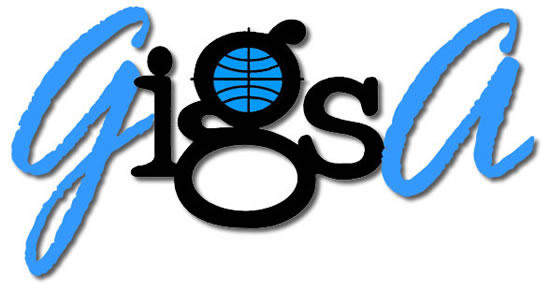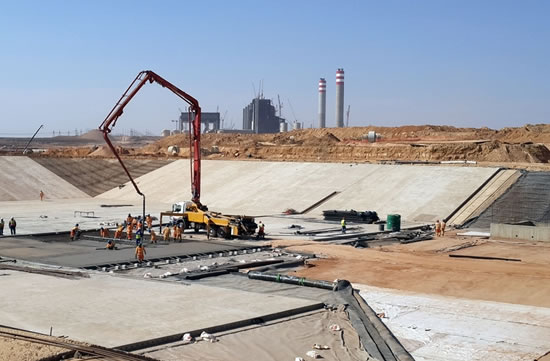

 The South African geosynthetics community continues to grow, in no small part due to relationships its participants have established with affiliated groups in construction and engineering. The latest newsletter from the Geosynthetics Interest Group of South Africa (GIGSA) and a free CPD lecture on filtration and drainage at the DUT Riverside Campus in Pietermaritzburg exemplify this interdisciplinary interaction.
The South African geosynthetics community continues to grow, in no small part due to relationships its participants have established with affiliated groups in construction and engineering. The latest newsletter from the Geosynthetics Interest Group of South Africa (GIGSA) and a free CPD lecture on filtration and drainage at the DUT Riverside Campus in Pietermaritzburg exemplify this interdisciplinary interaction.
GIGSA NEWSLETTER
In its August 2016 newsletter, GIGSA (South Africa’s Chapter of the International Geosynthetics Society) included news of a very successful capping workshop in Midrand. Supported by GIGSA and Institute of Waste Management of Southern Africa (IWMSA) members, the gathering drew 88 participants.
“I have seen significant growth in GIGSA in the past few months,” writes GIGSA President Edoardo Zannoni in the opening ‘Prez Sez’ column. “Not only in numbers but … in heritage and stature—making a difference in our industry and becoming a point of reference.”
DOWNLOAD AUGUST 2016 GIGSA NEWSLETTER (PDF)
One of the issue’s highlights is Kelvin Legge’s excellent report from the May 2016 International Commission on Large Dams (ICOLD) Workshop on “The use of geosynthetics in dam engineering.” The report summarizes seven key points of the session, which had more than 60 participants, and includes responses and insight from international practitioners such as Jonathan Fannin (Canada), Kent von Maubeuge (Germany), and Kelvin Legge and Garth James (South Africa).
Garth James, it must be noted, will deliver the first lecture honoring Kim Barnard. Congratulations, Garth! (And excellent choice, GIGSA.)
Another story in the issue that underscores the growing activity in South Africa is the post-event report on the First Southern African Geotechnical Conference. The May 2016 gathering was organized by the Geotechnical Division of the South African Institution of Civil Engineering (SAICE) under the auspices of the International Society of Soil Mechanics and Geotechnical Engineering (ISSMGE). More than 60 papers and 200 participants were involved, with discussions centered on foundations, mining and tailings, modelling and design, site investigation, soil properties, and soil reinforcement and slopes.
Case studies in the issue look at coal ash storage design and dam rehabilitation.
The issue also includes news on the bursary awards application period, the upcoming chapter election, task force updates, and more.
FILTRATION AND DRAINAGE WITH GEOSYNTHETICS LECTURE
On August 24, from 2:00 – 4:00pm, a free CPD lecture on “Filtration and Drainage with Geosynthetics” will be offered at Durban University of Technology’s Riverside Campus in Pietermaritzburg , KZN. The event is worth 0.2 South African Institute of Civil Engineers (SAICE) or South African Institute of Building Design (SAIBD) CPD credits, for those who are registered with the Engineering Council of South Africa (ECSA) or the South African Council for the Architectural Profession (SACAP).
This South African geosynthetics education event is sponsored by Kaytech. Field veteran Peter Davies will serve as the instructor.
The 2-hour talk follows up on the successful “Introduction to Geosynthetics” CPD lecture, adding technical depth. Information includes theory and practical experience on how subsoil and structural drainage should be designed and constructed.
Topics:
- Geotextile functions, types, and availability in the local market
- Properties and implications of using different polymers and constructions of geosynthetics
- How geotextiles work in filtration and when they don’t (e.g., mechanisms of piping, blocking, blinding, and clogging)
- Stone-filled drains vs. fin or panel drains: Performance, costs, and installation issues
- Area Drainage: Sports fields, permeable paving, panel drains
- Structural Drainage: Geonets, cuspated sheet systems, roof gardens, parking areas
- Septic and stormwater attenuation systems: A new approach in using HDPE tunnel formers instead of stone leach fields and soak pits
- Gabion structures: The need for filters and what can happen when they are not used
LEARN MORE ABOUT THE LECTURE
**
Learn more about South African geosynthetics opportunities and activities at www.gigsa.org.











